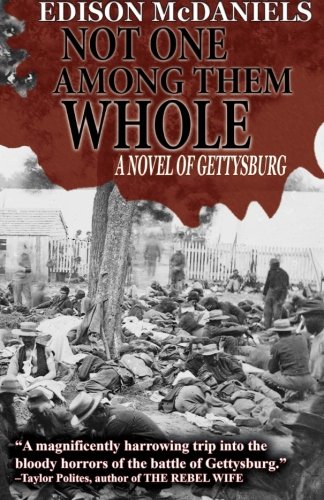Let’s consider modern battlefield surgery. I don’t have a military background, but I am a former surgeon with an extensive trauma experience, so I can make an educated guess as to how our wounded soldiers are treated.
First, conditions permitting, I would surmise that the wounded are removed from the field of battle as quickly as possible. Secondly, the medics are capable of treating life-threatening injuries, such as massive hemorrhage and sucking chest wounds, in the field. IV fluids can be infused at a rapid rate to replace blood loss until blood transfusions can be administered.
Once in the mobile surgical hospital, the surgeons would have an array of diagnostic tools including x-ray and ultrasound. They would also have the instruments they need and a way to clean and sterilize them. Access to blood for transfusion, antibiotics to treat infection, sources of nutrition and hydration for those patients who cannot eat or drink would also be available.
And finally, there is no body cavity or organ system that is beyond the reach of the surgeon’s scalpel. If a bone is shattered, it can be pieced back together with screws, plates, and pins. If a major artery is lacerated, it can be repaired with a Dacron interposition graft or a segment of cadaver artery. Non-lethal injuries to the brain, heart, lungs and any other organ can be surgically treated.
Now let’s take a look at the state of battlefield surgery during the Civil War as depicted in Edison McDaniels’ Not One Among Them Whole: A Novel of Gettysburg. First, it seems that many of the wounded languished on the field of battle until the fighting was over, which leads one to wonder how many soldiers died from wounds that could have been successfully treated with today’s techniques. Second, there were no blood transfusions or IV fluids at the time. If blood loss was significant, there was no way to replace it, and we now know that non-fatal significant blood loss may result in multiple organ failure, increased risk of infection, and poor wound healing.
Antibiotics had not been discovered yet (in fact, bacteria as an infectious agent hadn’t even been identified), so for those soldiers fortunate enough to survive their acute injuries many went on to die from infection. Postoperative nutrition and hydration was limited to what the patient could eat or drink. Pain medication consisted of shots of whisky and sips of opioid elixirs. Many Civil War era soldiers–who today would be saved by simple means such as proper nutrition, hydration, blood transfusion and IV antibiotics–went on to die from postoperative infection, malnutrition, dehydration and dysentery.
And lastly, what did the surgeons of the day have in their armamentarium? Not much. If a bone in the arm or leg was shattered by a steel ball—amputation. If a major artery or vein was lacerated—amputation. A gunshot or bayonet wound to the abdomen with perforation of the gastrointestinal tract and/or major bleeding—death, most of the time. And forget about penetrating injuries to the chest or cranium. Very little, if anything could be done to treat these wounds.
And now let’s get to the heart of the matter. We all know that war is Hell, but think about how hellish it was to be a wounded soldier, or a surgeon treating that soldier, during the Civil War. That’s what Not One Among Them Whole offers the reader: a chance to get inside the minds of the soldiers, surgeons, and other ancillary individuals who were swept up by the Gettysburg conflict. Edison McDaniels does a stunning job of portraying the human carnage that was Gettysburg, and he chronicles the loss–of life, of limb, and sanity–of those involved. And he does all this with an elegant prose style, dialects that ring true for time and place, and characterizations that would impress Mark Twain.
If you are a reader of Civil War fiction or nonfiction and have an interest in medicine and surgery, this book is for you. If you are a writer and you want great examples of characterization, dialogue, and how NOT to overdo dialect, you could do no wrong by studying Dr. Daniels’ technique.
If you’ve read, or end up reading this book, please leave a comment and let me know what you think.

